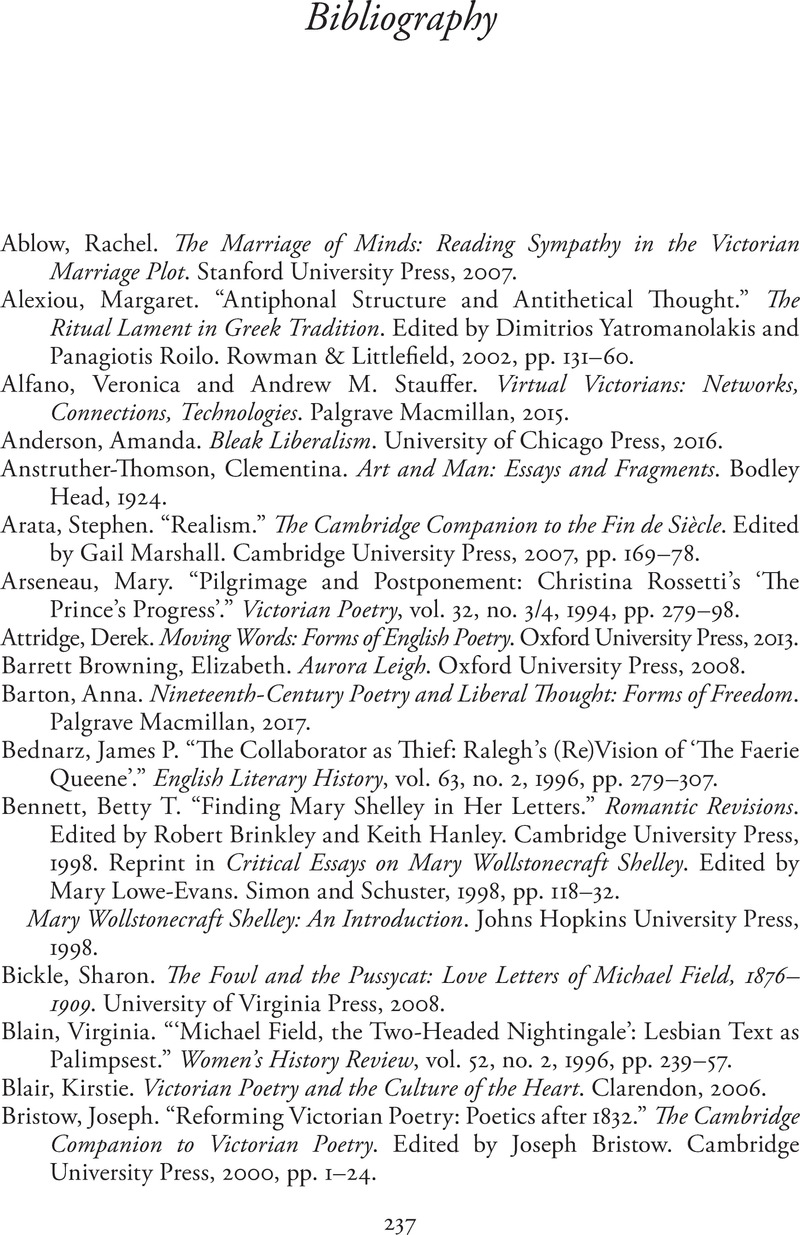Book contents
- Collaborative Writing in the Long Nineteenth Century
- Cambridge Studies in Nineteenth-Century Literature and Culture
- Collaborative Writing in the Long Nineteenth Century
- Copyright page
- Dedication
- Contents
- Figures
- Acknowledgments
- Introduction
- Chapter 1 Adam Smith’s Liberal Sympathy
- Chapter 2 “O You Pretty Pecksie!”
- Chapter 3 Written–Visual Aesthetics
- Chapter 4 Typographical Adventures
- Chapter 5 Sim and Puss
- Chapter 6 Towards Empathy
- Conclusion
- Notes
- Bibliography
- Index
- Cambridge Studies in Nineteenth-Century Literature and Culture
- References
Bibliography
Published online by Cambridge University Press: 12 March 2022
- Collaborative Writing in the Long Nineteenth Century
- Cambridge Studies in Nineteenth-Century Literature and Culture
- Collaborative Writing in the Long Nineteenth Century
- Copyright page
- Dedication
- Contents
- Figures
- Acknowledgments
- Introduction
- Chapter 1 Adam Smith’s Liberal Sympathy
- Chapter 2 “O You Pretty Pecksie!”
- Chapter 3 Written–Visual Aesthetics
- Chapter 4 Typographical Adventures
- Chapter 5 Sim and Puss
- Chapter 6 Towards Empathy
- Conclusion
- Notes
- Bibliography
- Index
- Cambridge Studies in Nineteenth-Century Literature and Culture
- References
Summary

- Type
- Chapter
- Information
- Collaborative Writing in the Long Nineteenth CenturySympathetic Partnerships and Artistic Creation, pp. 237 - 249Publisher: Cambridge University PressPrint publication year: 2022



